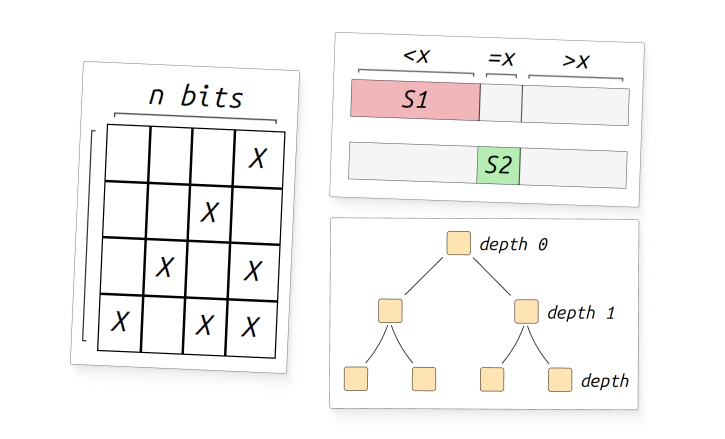I asked again about Robust Computing, and I think they made some progress: youtube.com/watch?v=BtjurVN6rz8
algot.org — a research visual, by-demonstration (aka code while seeing concrete values 🍰), language operating on graphs. Papers largely closed-access but preprints here.
I find it a bit hard to imagine how one uses it from screenshots, and ~didn't find videos / lectures?~ OK here's a (silent) demo: vimeo.com/729159376
In some ways similar to Subsequently in de-ambiguating user intent by "demonstration" not being "say the result" but "pick an action".
My friend wrote this CHI ‘25 system paper (open access). Very cool: dl.acm.org/doi/10.1145/3706598.3713723

I love this. Just want to throw out an actual debug UI I created to solve a real problem that doesn't quite fit neatly into the "visualize a data structure" frame.
akkartik.name/post/2023-11-04-devlog
Here the dots are in a 2D array, but the array is interpreted spatially and the space between elements is interpreted continuously.
I've often wondered what sort of systematization might cover ideas like this. It will be familiar to game programmers, who are constantly annotating 3D spaces with metadata in their debug UIs..
Just saw this talk, this is awesome. My immediate next question (and what I imagine most FoC people would ask) is using it in the opposite direction, for interacting with diagrams -> data structure values
I’m at CHI right now and just saw this talk. Haven’t read the paper yet, but it seems like it might have some interesting takeaways about a population of scientific programmers with interesting, idiosyncratic needs dl.acm.org/doi/10.1145/3706598.3713621
Understanding Marine Scientist Sofware Tool Use
Marine science researchers are heavy users of software tools and systems such as statistics packages, visualization tools, and online data catalogues. Following a constructivist grounded theory approach, we conduct a semi-structured interview study of 23 marine science researchers and research supports within a North American university, to understand their perceptions of and approaches towards using both graphical and code-based software tools and systems. We propose the concept of fragmentation to represent how various factors lead to isolated pockets of views and practices concerning software tool use during the research process. These factors include informal learning of tools, preferences towards doing things from scratch, and a push towards more code-based tools. Based on our findings, we suggest design priorities for user interfaces that could more effectively help support marine scientists make and use software tools and systems.
"Cognitive Tools for Making the Invisible Visible" by Judy Fan (2025)
In the 17th century, the Cartesian coordinate system was groundbreaking. It exposed the unity between algebra and geometry, accelerating the development of the math that took humans to the moon. It was not just another concept, but a cognitive tool that people could wield to express abstract ideas in visual form, thereby expanding their capacity to think and generate new insights about a variety of other problems. Research in my lab aims to uncover the psychological mechanisms that explain how humans have come to deploy these technologies in such innovative ways to learn, share knowledge, and create new things. In the first part of this talk, I will provide an overview of our work investigating drawing — one of humanity's most enduring and versatile tools. Across several empirical and computational studies, I’ll argue that drawing not only provides a window into how people perceive and understand the visual world, but also accelerates the ability to learn and communicate useful abstractions. In the second part of this talk, I will preview an emerging line of work in our lab investigating the cognitive foundations of data visualization — one of humanity's more recent inventions for making the invisible visible. I will close by noting the broader implications of embracing the continually expanding suite of cognitive tools for accelerating the development of new technologies for augmenting human intelligence.
I find this fascinating. The way my mind works, , I found Merkle's 20 minute talk to be very informative (included near bottom of post). Digital computation was done with tubes, then with transistors and now there is a suggestion that mechanical devices might supersede transistors. The NAND gate is fundamental to how CPUs work. If you can implement NAND, you can implement a CPU.
tennysontbardwell.com/blog/2025/04/30/mechanical-computing/index.html